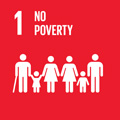- Docente: Giuliano Bettini
- Credits: 3
- SSD: VET/03
- Language: English
- Teaching Mode: Traditional lectures
- Campus: Bologna
- Corso: Second cycle degree programme (LM) in Food Animal Metabolism and Management in the Circular Economy (cod. 5814)
-
from Dec 11, 2024 to Jan 10, 2025
Learning outcomes
At the end of the module, students: 1. can explain the relationships between stress, inflammation and immune response; 2. know the main hepatic and gastrointestinal pathologies that can interfere with metabolic efficiency; 3. can correlate humoral parameters for estimating metabolic efficiency with physiological or pathological processes.
Course contents
DEFINITION AND EXAMPLES OF SIGNIFICANT STRESSORS IN FARM ANIMALS.
Environmental Factors. Heat, Cold, Humidity, Noise, Lighting
Management Factors. Handling, Transportation, Housing Conditions, Procedures
Nutritional Factors. Dietary Imbalances, Lack of essential nutrients, Overfeeding, sudden changes in diet, Water Availability
Social Factors. Social Hierarchies, Isolation
Health Status. Illnesses, injuries, parasites
Reproductive Status. Pregnancy, Parturition, Lactation
MECHANISMS OF INITIATION OF METABOLIC DISORDERS BY STRESS FACTORS
Activation of the Hypothalamic-Pituitary-Adrenal Axis. Cortisol Release; Energy Redistribution
Impact on Glucose Metabolism. Insulin Resistance, Hyperglycemia
Altered Protein Metabolism. Muscle Catabolism, Reduced Growth
Lipid Metabolism Dysregulation. Increased Lipolysis, Ketosis
Immune System Suppression. Increased Susceptibility to Infections, Chronic Inflammation:
Reproductive and Lactation Performance. Reduced fertility, Irregular estrous cycles, Higher rates of pregnancy loss, Reduced milk production
Nutritional Imbalances. Feed Intake Reduction, Digestive Issues
EXAMPLES OF METABOLIC DISORDERS INDUCED BY STRESS
Bovines. Ketosis, Fatty Liver Syndrome, Hypocalcemia, Displaced Abomasum, Laminitis, Rumen Acidosis, Pregnancy Toxemia
Small Ruminants. Pregnancy Toxemia – Ketosis, Hypocalcemia - Milk Fever, Enterotoxemia - Pulpy Kidney, Acidosis, Laminitis, White Muscle Disease, Hypomagnesemia - Grass Tetany
Swine. Porcine Stress Syndrome (PSS), Exudative Epidermitis (Greasy Pig Disease), Metabolic Myopathy - Pale Soft Exudative Meat (PSE), Ketosis, Fatty Liver Syndrome, Acidosis, Heat Stress, Hypertension, Gastric Ulcers, Post-Weaning Multisystemic Wasting Syndrome (PMWS); Hypoglycemia in Piglets, Iron Deficiency Anemia
Poultry. Fatty Liver Hemorrhagic Syndrome (FLHS), Ascites (Pulmonary Hypertension Syndrome), Osteoporosis (Cage Layer Fatigue), Hypoglycemia (Sudden Death Syndrome), Gout, Rickets, Sudden Death Syndrome (Flip-Over Disease), Deep Pectoral Myopathy (Green Muscle Disease), White Striping, Wooden Breast Syndrome
Farmed fishes. Acidosis, Hypoxia, Nitrite Poisoning, Gill Disease, Metabolic Stress Syndrome, Swim Bladder Disorders, Stress-Induced Hyperglycemia, Muscle Degeneration (Myopathy), Stress-Induced Immunosuppression.
CASE STUDIES AND PRACTICAL APPLICATIONS.
Analysis of real-life case studies. Student presentations on specific topics
Readings/Bibliography
Relevant articles from scientific journals
Teaching methods
Lectures and student presentations on specific topics and case study analysis, with interactive discussions and group work
The course setting is aimed at promoting student's active learning by analysing and elaborating clinical cases and specific topics, according to the self-directed learning model (working in groups and personal processing). Students will be provided with reference materials (articles from scientific journals, chapters or extracts from books) with which they will have to prepare presentations on the most common stress-induced diseases in farmed animals, also selected based on their personal interests. All students must attend all presentations.
Assessment methods
- Participation and attendance (10%)
- Student presentation (50%): clarity and efficacy of exposition, summary and completeness of the topic discussed, discussion
- Final written examination (40%): closed-ended questions on topics presented in lectures and student presentation
Teaching tools
- PowerPoint slides of lectures
- PowerPoint slides of student presentations
- Handout provided by the teacher
- PDFs of relevant articles on scientific journals
- Pertinent videos and selected websites
Students will also be invited to perform a bibliographic research on the assigned topic, on-line or in the library, to obtain further material for in-depth study.
Office hours
See the website of Giuliano Bettini
SDGs




This teaching activity contributes to the achievement of the Sustainable Development Goals of the UN 2030 Agenda.
